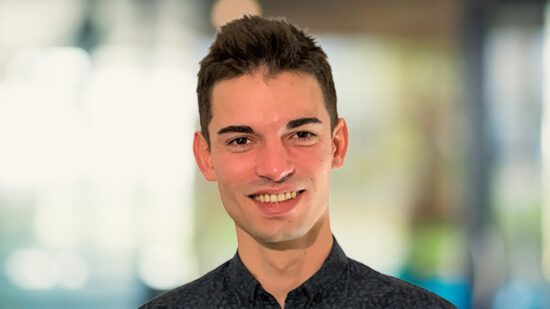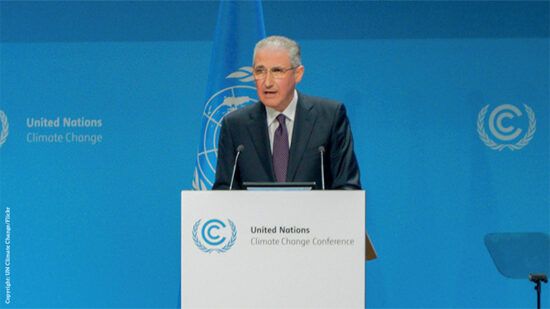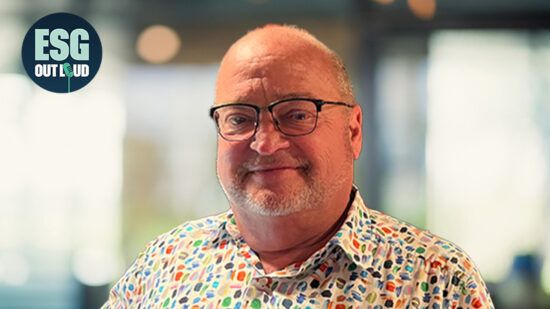 Real estateSimone Pozzato, senior managing director at Hines and fund manager for the Hines European Core Fund (HECF).
Real estateSimone Pozzato, senior managing director at Hines and fund manager for the Hines European Core Fund (HECF).ESG, and particularly decarbonisation, is now not just a matter of corporate and regulatory responsibility but a commercial imperative for real estate investors.
Decarbonisation in particular is so important because it’s so highly correlated to financial performance. When done right, it delivers efficiency for occupiers and additional income opportunities for investors.
Occupiers are also engaged in this conversion as most of them are committed to become carbon neutral in operations in the next 10 or 20 years.
An example of this is aer, an office complex in Munich we acquired in 2020. The assets comprise more than 938,000 square feet and has undergone a comprehensive refurbishment, transforming into a high-quality office-led, mixed-use scheme that addresses both the E’ and ‘S’ of ESG. A ‘meanwhile use’ concept co-created with the community as a social, cultural, educational and artistic meeting place for citizens throughout Munich. It welcomes 250-700 visitors per day and has a community kitchen that focuses on sustainable use of food stemming from edible food waste to create appealing meals at affordable prices.
The project is using various measures to reduce the carbon emissions of the scheme including biodiversity and carbon sequestration on roof terraces and green areas. aer obtained 100% of its energy from renewables, with plans underway to harness further geothermal and solar energy to deliver emissions savings equivalent to the carbon storage capacity of >700,000 trees. Additional social value is delivered through hosting workshops and site tours with the local community, as well as on-site exercise areas and an urban garden to support wellbeing.
 Private equity impact (healthcare)Shade Duffy, director of impact management, AXA IM Alts.
Private equity impact (healthcare)Shade Duffy, director of impact management, AXA IM Alts.Private equity impact covers a myriad of strategies and sectors. The commonality is normally an aim to generate positive, measurable social and environmental outcomes, while also producing competitive financial returns.
Global healthcare is one such sector within this space. Global healthcare spending grew 30% faster than global GDP from 2010 to 2017, with the rate twice as fast in middle income versus high income economies. Despite this, there is still a significant funding gap in global healthcare and widespread, affordable access to basic healthcare solutions is still nascent.
There are huge opportunities to invest in companies that are focused on developing and commercialising innovative medical devices, pharmaceuticals, vaccines, and diagnostics. Among other areas, these can also seek to address healthcare inequities through reaching underserved, low-income nations. Many of these are targeting critical healthcare pillars such as women, maternal & child, vision, infectious diseases, and diabetes & obesity.
One such company is LimmaTech Biologics AG, a clinical-stage biopharmaceutical company advancing vaccines to halt the rise in global infections due to emerging antimicrobial resistance (AMR) and sexual diseases.
LimmaTech is developing a vaccine for Shigella, a bacteria responsible for 13% of all deaths due to diarrhoea according to the World Health Organization. Children under the age of five are the most affected by shigellosis, which can lead to malnutrition and stunted growth, negatively impacting their long-term development. One million cases of moderate to severe stunting in children in low-or-middle-income countries (LMIC) are attributed to Shigella.
The company’s proposed vaccine is easy to manufacture, affordable and offers compelling clinical data and support from international organisations, making it accessible to low-resource communities. As humans are primary carriers of Shigella, a vaccine could potentially lead to the eradication of shigellosis. The vaccine would also significantly reduce antibiotic use and slow the spread of antibiotic resistance.
 InfrastructureDon Dimitrievich, portfolio manager, senior managing director, energy infrastructure credit, Nuveen.
InfrastructureDon Dimitrievich, portfolio manager, senior managing director, energy infrastructure credit, Nuveen.The growing pressure to meet decarbonisation goals, has brought with it an increasing focus on our current infrastructure. The Department of Energy even stated that the capacity of the existing US grid will need to increase by 57% by 2035, if they are to reach their aims. This underscores the tremendous need for investments in renewable energy and the associated supporting infrastructure, which are estimated to be $200bn–$500bn annually in the US alone.
We expect the acceleration of electrification that will need to sit alongside this growth will create a growing industry of supporting infrastructure and solutions to enable these renewables projects, specifically the current and increasing need for energy storage and onshoring of the infrastructure supply chain.
Again looking to the US, given the buildout of energy storage as standalone and alongside solar, the obvious proposition would be investing in the supply chains which serve these sectors. This is heightened when looked at in combination with the significant support from the Inflation Reduction Act (IRA) in the form of production tax credits and other economic benefits like the domestic content adder.
 Private creditVai Patel, head of ESG at Alcentra.
Private creditVai Patel, head of ESG at Alcentra.The potential for sustainability impact / pursuits are arguably less understood within the private credit space.
However, in 2024, key wide-ranging legislation is expected to be implemented in UK & Europe, that aims to improve the transparency and accountability of corporate sustainability performance across the region. The developing regulatory environment provides a fertile backdrop for the growth in the Sustainability-Linked Loan (SLL) market and broader sustainable finance universe.
SLLs are loan facilities that incentivise companies’ sustainability performance by linking the interest margin to the improvement of tailored ESG Key Performance Indicators (KPIs). The loan’s margin will either increase or decrease, by a pre-determined amount, based on whether or not the company is able to achieve a particular set of Sustainability Performance Targets (SPTs) for each KPI.
Regulation, such as the EU’s Corporate Sustainability Reporting Directive (CSRD) or the Task Force on Climate-Related Financial Disclosures (TCFD), will require companies to disclose relevant information on their environmental, social and governance impacts, risks and opportunities, as well as quantify their current base-line metrics for key ESG data points such as greenhouse gas emissions.
This exercise has the potential to directly lend itself to the setting of robust, data driven KPIs which can be leveraged for the structuring of an SLL facilities.
The tailwinds that regulation is creating for the potential growth in the SLL market creates opportunities for asset managers and investors alike. Firstly, through the structuring of more SLLs in private credit strategies, enabling an improvement in risk-adjusted returns and allowing investment teams to create deeper relationships with private equity sponsors and management teams. And secondly, through the increase proportion of SLL in liquid loan portfolios, allowing managers to further embed sustainability into the construction of their liquid funds.
Tackling the growing pressure to meet decarbonisation goals in private markets
Fund managers in various private market sectors share how the asset classes are approaching decarbonisation








